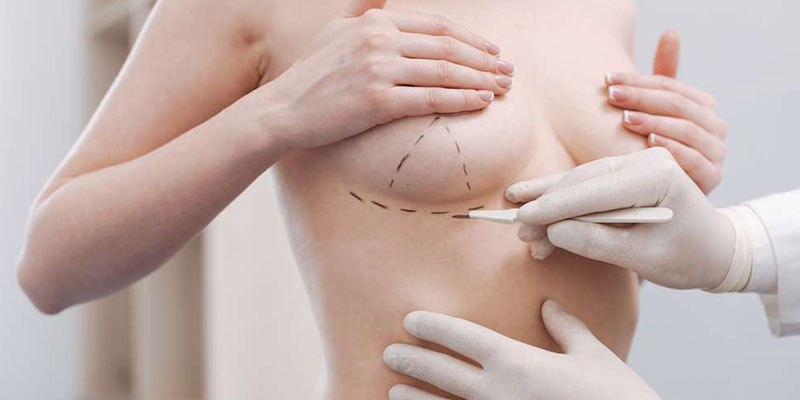Breast Repair
Breast cancer is the most common type of cancer seen in one out of every eight women.
Although it is possible to identify and treat the disease at an early stage with advances in medicine and social awareness projects, most women may feel incomplete or unhappy when breast needs to be taken. Breast (reconstruction) repair means replacing the breast that has been taken after cancer with a similar breast.
Breast reconstruction requires a multidisciplinary approach. Reconstruction should be included in the treatment immediately after the diagnosis is made. In short, two different timings are preferred as early reconstruction and late reconstruction. This timing can be decided by the patient's general condition and the stage of the cancer.
Early Reconstruction
Generally, in early stage breast cancers, the same operation in which the breast is taken, the plastic surgery team is involved in the operation and re-forming the breast. The advantage of this operation is that the patient is relieved of being operated on for the second time and most importantly, the feeling of loss of the limb and psychological trauma is less as a result of the replacement of the breast. In the same operation, both cancerous tissue is saved and new breasts are made.
Late Reconstruction
It is the case of late reconstructions in cases where the reconstruction is decided after these treatment methods with the joint decision of the oncologist general surgeon and plastic surgery specialists in line with the need for additional treatments such as chemotherapy and radiotherapy after the operations. In order to replace the lost breast, it is expected to control the cancerous area or to complete the additional treatment.
Breast Repair Surgery
The removal and repair of the breast is the work of completely different areas of expertise. The repair of the breast should be performed by a plastic surgeon, not by a general surgeon. Patients have the right to ask how to repair a breast that has been taken in the first interviews and should request it.
Plans are made according to the general condition of the patient, the effects of radiotherapy and the psychological state of the patient. Either prosthesis options that can be placed externally or operation options using the patient's own tissue can be preferred.
When deciding whether there is any vascular damage in the breast due to radiotherapy, the presence of other diseases such as sugar and heart of the patient and smoking are taken into consideration. Different parts of the patient such as back, abdomen, buttock, and leg can be used in these surgeries.
The most preferred area for surgery is the abdominal area. In women who have given birth, fat and sagging in the abdomen, this area can be used for skin and fat tissue, breast construction. The patient can be transferred for the purpose of making breast tissue, which is already excess fat, by performing a procedure like abdominal stretching. This transfer can be used in micro surgical methods. Thus, while the patient's breast is being made, abdominal stretching is done at the same time.
In simultaneous reconstructions, the prosthesis can be placed under the muscle tissue because the breast skin remains intact. In late reconstructions, tissue expander applications and prosthesis applications can be performed first to gain skin elasticity.
The purpose of the reconstruction is to make the closest repair to the lost tissue. The first step is to form a breast that disappears in the anterior chest wall. In the second step, one breast is likened to the other while the nipple is formed on the newly constructed breast. The next step is to obtain a brown appearance of the nipple.
Who is Suitable for Breast Repair Operation?
Every patient diagnosed with breast cancer or who has undergone mastectomy may be referred to a plastic surgeon for breast reconstruction with appropriate planned surgery if there is no obstacle in the evaluation. Breast reconstruction should be performed by a plastic aesthetic and reconstructive surgery specialist.
It is possible to encounter general problems like all surgical procedures. The risk increases in patients who smoke or have systemic problems such as diabetes and heart disease. In rare cases, circulatory disorders and partial or complete tissue loss may occur in the transferred tissue. For this, secondary options should be available when planning operations.



